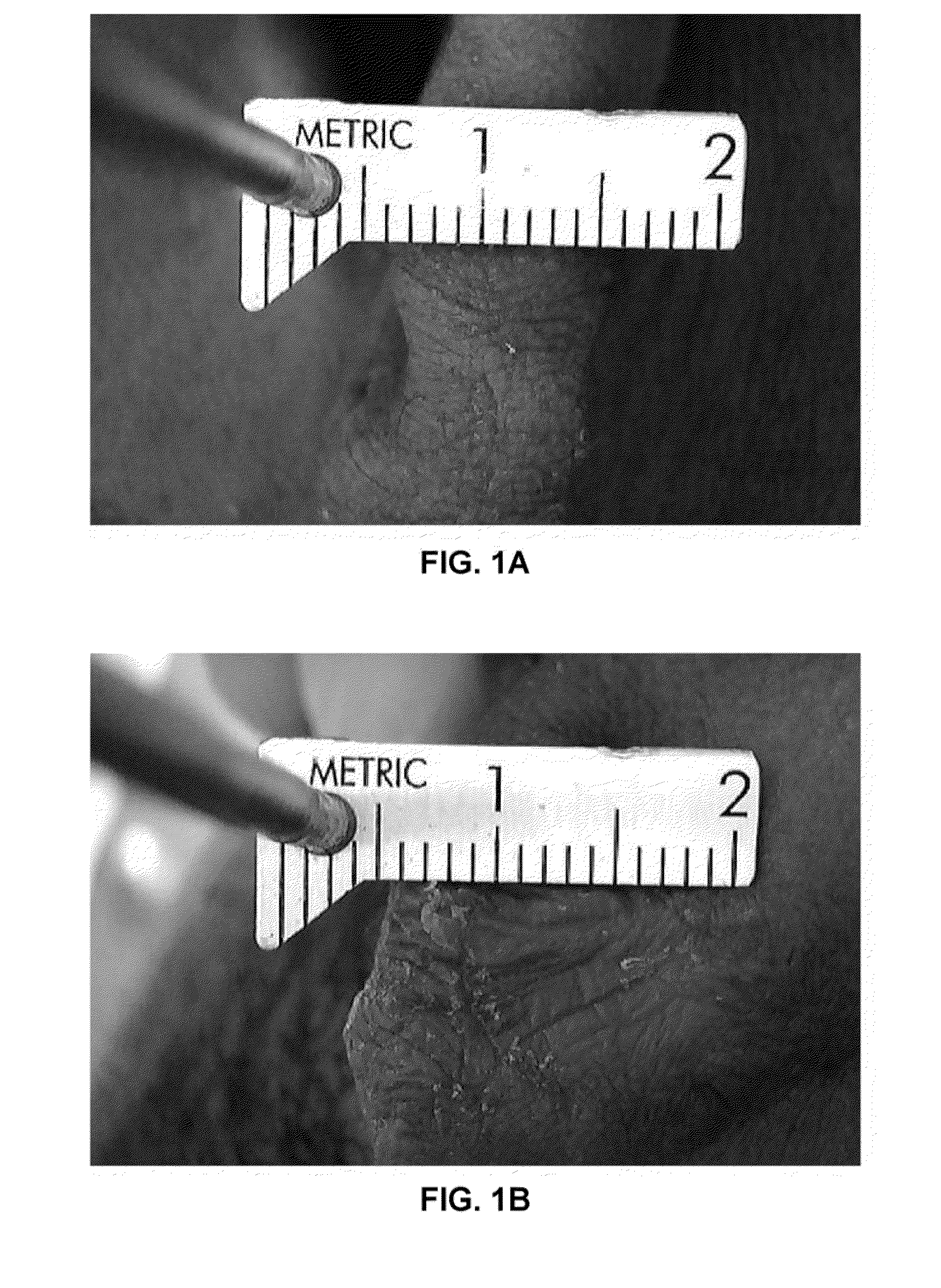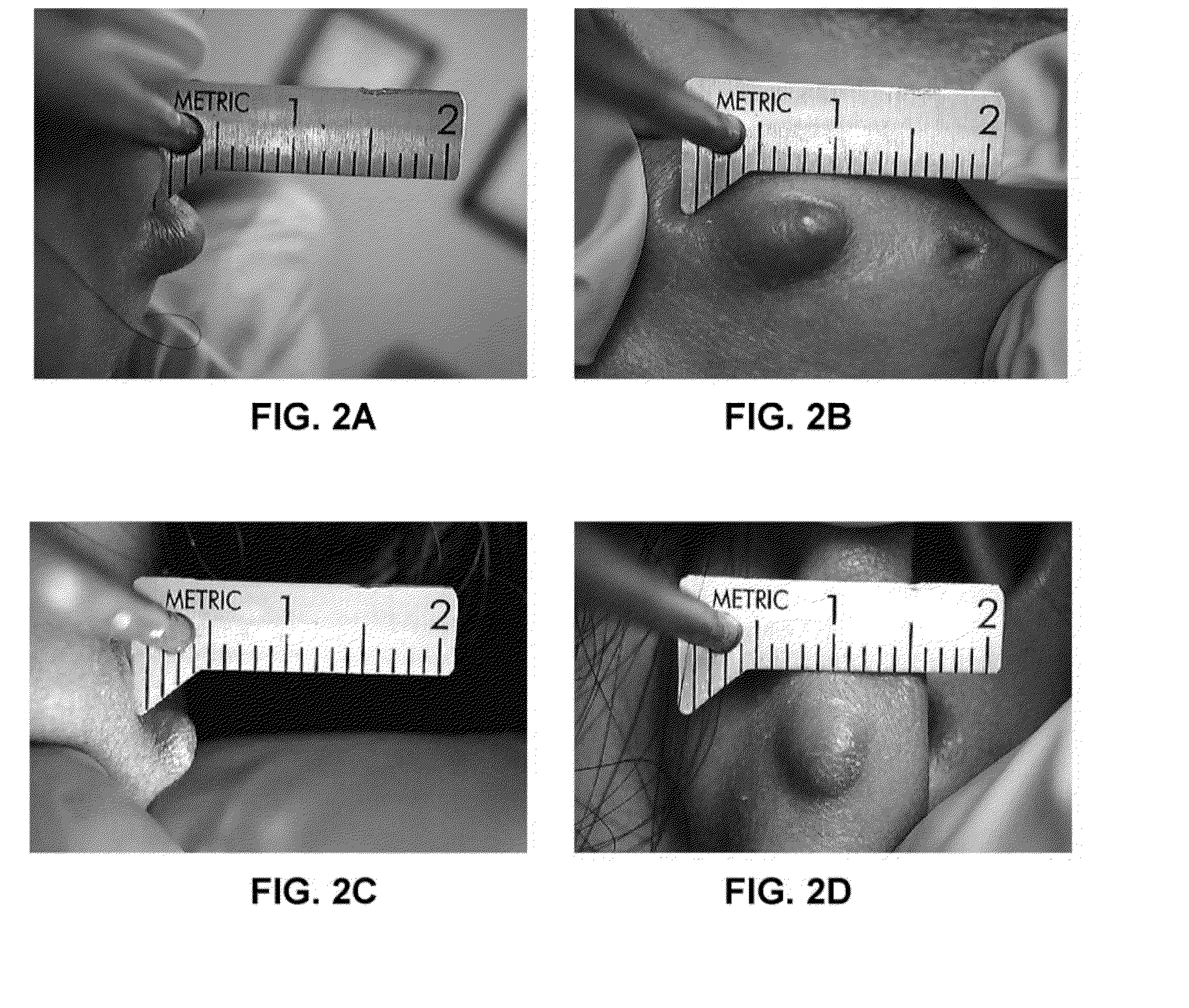Product and method for treating keloid scars, hypertrophic scars and burn scars with contracture
a technology of hypertrophic scars and keloid scars, which is applied in the direction of biocide, drug compositions, peptide/protein ingredients, etc., can solve the problems of lumpy scars, large scars, and severe debilitating effects
- Summary
- Abstract
- Description
- Claims
- Application Information
AI Technical Summary
Benefits of technology
Problems solved by technology
Method used
Image
Examples
example 1
[0031]A first patient had a hard keloid scar on the right earlobe measuring 10 mm×5 mm×10 mm. A pharmaceutical composition was prepared by mixing 1.0 mg of high molecular weight hyaluronic acid (0.1 cc of HYALGAN®, sodium hyaluronate) with 7.5 units of hyaluronidase (HYLENEX® recombinant human hyaluronidase), which was injected into the keloid scar. Within 1 to 2 weeks post injection a noticeable reduction is size and hardness of the keloid scar had occurred. Thirty-eight days post injection the keloid scar was almost completely resolved, with an approximately 100% reduction in height, a nearly 40% reduction in length, and a nearly 100% reduction in width (see FIGS. 1A and 1B). Erythema and tenderness of the keloid scar was also resolved.
example 2
[0032]A second patient had a very dense keloid scar on the right earlobe measuring 8.5 mm×6.5 mm×5 mm (see FIGS. 2A and 2B). A pharmaceutical composition was prepared as in Example 1, and injected into the keloid scar. Thirteen days post injection, the keloid scar had a noticeable overall reduction in size and density, with an approximately 24% reduction in length, 30% reduction in height, and 8% reduction in width (see FIGS. 2C and 2D). This patient also had a very dense small left earlobe keloid scar that measured 2×2×2 mm, which was treated at the same time; thirteen days post injection resulted in tissue softening and an approximately 50% reduction in size.
example 3
[0033]A third patient had a large dense keloid scar behind the right ear measuring 68 mm×45 mm×16 mm (see FIGS. 3A and 3B). The patient also reported a sharp, piercing pain from the keloid scar. A pharmaceutical composition was prepared as in Example 1, and injected into the keloid scar. Only a small reduction in size of the keloid scar occurred within 2 weeks, so the keloid scar was treated again. Forty-one days post injection the piercing pain had resolved, and the keloid scar was substantially reduced in the size and density: the scar had a negligible reduction in length, 31% reduction in height, and 11% reduction in width (see FIG. 3C).
PUM
| Property | Measurement | Unit |
|---|---|---|
| Mass | aaaaa | aaaaa |
| Mass | aaaaa | aaaaa |
| Volume | aaaaa | aaaaa |
Abstract
Description
Claims
Application Information
 Login to View More
Login to View More - R&D
- Intellectual Property
- Life Sciences
- Materials
- Tech Scout
- Unparalleled Data Quality
- Higher Quality Content
- 60% Fewer Hallucinations
Browse by: Latest US Patents, China's latest patents, Technical Efficacy Thesaurus, Application Domain, Technology Topic, Popular Technical Reports.
© 2025 PatSnap. All rights reserved.Legal|Privacy policy|Modern Slavery Act Transparency Statement|Sitemap|About US| Contact US: help@patsnap.com



